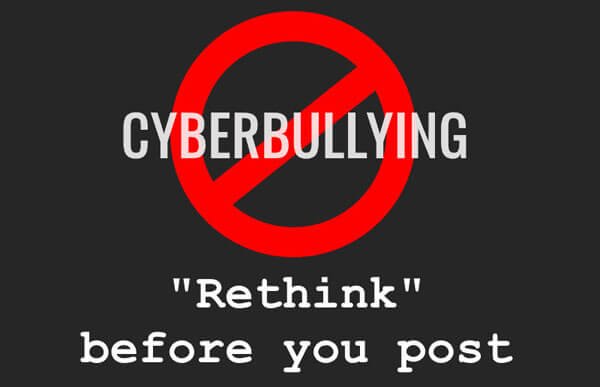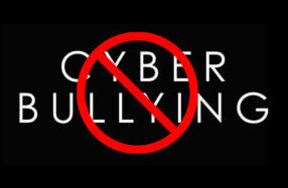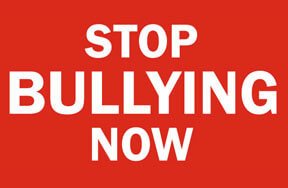Tomorrow, I will put my daughters on the bus for their respective first days of school. Today, I am letting them sleep late, just one more time, as a last hurrah of summer. While they rest, I am reading news online and can't help but notice dozens -- literally dozens -- of articles about bullying. Yes, indeed, it is back-to-school time.
A large part of me is gratified that intentional, relentless cruel behavior amongst young people receives media coverage these days. Bullying is a phenomena that has existed in the shadows for too long; its exposure to the light of day is the critical first step in stopping it. But another part of me sees the abundance of headlines and I understand why one teacher recently told me, "You know, we get all of these trainings about legal obligations, paperwork protocols, what to say to parents, and how to spot a bully, but what we really need is specific instruction on what to do in the moment."
I hear him. I really do. As an author and national educator on bullying, I know that people like me tend to dispense a lot of information. We tell the who, what, when, where, and why of bullying long before we get around to the how of changing it. While I do believe the old saying that "without theory, there is no practice," I also know that what dedicated champions of children -- who are pressed for time and overloaded with information -- want is sometimes as simple as a list of Dos and Don'ts.
 12 Dos and Don'ts for Stopping Bullying
12 Dos and Don'ts for Stopping Bullying
So, at the risk of oversimplifying a very complicated issue among young people, but at the hope of creating a go-to roadmap for educators, counselors, youth workers, and parents, here are a dozen Dos and Don't of stopping bullying in schools:
DO:
- Know Bullying: Understand the difference between behavior that is spontaneously rude, mean, or inconsiderate and actions that are relentlessly and intentionally cruel. While none of the above are desirable and all should be stopped by caring adults, the latter are hallmarks of bullying and require focused interventions. Lumping all bad behaviors into the bullying basket breeds cynicism and diverts time and resources away from vulnerable kids who need them most.
- Connect with Kids: Too often, adults are unaware of incidents of bullying because socially-savvy aggressors operate under their radar and socially-vulnerable kids are too disconnected to talk about them. When a young person believes that an adult genuinely cares about his well-being, he is more willing to risk sharing painful peer experiences.
- Make Time: The number one protest I hear from adults when I suggest "connecting with kids" is that they don't have enough time in their day to do so. Paperwork, deadlines, standardized tests, and never-ending task lists take up so much time that personal connections with kids become a luxury adults believe they cannot afford. Refuse to believe it! To Dos will always be there but young people rarely stick around after an adult has ignored or dismissed them.
- Smile: Seriously. Little things are big things in the world of young people. If you are still worried that you don't have enough time to connect with kids, try something as simple and quick as smiling at each and every young person that you encounter in a day whether at home or at work. While you are at it, make eye contact and say hello to them, preferably using their first name. Please know that I am not de-valuing the pervasive and life-altering issue of bullying when I give this advice; rather I am suggesting that something as momentary and uncomplicated as a warm, daily greeting from an adult can help a young person feel acknowledged, valued, and worthy -- and that is a foundation for protecting a child from the impact of bullying.
- Be Present: Adults cannot be everywhere in the lives of kids, but we can strategically and purposefully place ourselves in the locations where bullying most often occurs. Even though the majority of bullying occurs in school, up to 75 percent of it occurs outside of the classroom. Effective adults plan to walk the halls between classes, mingle with students in the cafeteria, keep a watchful eye during recess, sit amongst kids on the school bus, and yes, develop programs to monitor student behavior online. Any/all of these actions listed above are effective both because they facilitate connections between adult and kids and because they reduce a bully's opportunity to act.
-
Intervene on the Spot: That same adult who confided in me that in-service trainings never taught him enough about what to do in the moment also said that he never could come up with the right words to say on the spot. He is not alone. Many adults struggle with crafting a helpful message when they witness an incident of bullying. The good news is that often the most effective approach in stopping bullying is the least wordy one. Consider any of the following brief statements:
- "It's not okay to use those words to put someone down. Are we good?"
- "Posting that online about a classmate is unacceptable. That cannot happen again."
- "Excluding her from the group is not going to work. Let's fix this and move on." Brief statements are effective because while they don't humiliate or alienate an aggressor, they do let everyone present know that the adult is observant, aware of peer dynamics, and not afraid to step in. On-the-spot interventions send a strong message to all young people that bullying behavior will not be tolerated.
- Teach Skills: If there is one thing most adults appreciate in kids, it is a young person's ability to handle conflict independently and with dignity. It is important to note, however, that no child is born knowing how to do so. Kids develop long-term social and emotional competence through daily repetition and practice of skills. Adults play a critical role in teaching kids to assert themselves, stand up for others, reach out to adults, empathize with peers, control their emotions, and solve problems.
 Stop cyberbullying now!
Stop cyberbullying now!
DON'T
- Don't Dismiss: Bullying is not a rite of passage for young people nor is it a normal part of growing up. Conflict is one thing -- and as noted above, kids do need skills to manage it effectively -- but being on the receiving end of relentless cruelty is another. Kids need adults who are willing and prepared to step in to stop bullying whenever they become aware of it. Kids who are bullied should never, ever be asked to go it alone.
- Don't Make it Worse: Sadly, there are some instinctual responses from adults that can actually worsen bullying situations. For example, some adults are tempted to step in to stop a situation by asking a child who is obviously being taunted, "Are you okay? Is s/he bothering you?" While intended to give the vulnerable child a voice, this type of on-the-spot intervention leaves the bullied child with virtually no choice but to say, "No, I'm okay." Very early on in life, kids learn that public confrontations of a tormentor will only bring them further trouble down the road. Kids learn to cover for their aggressor. In the process, aggressors net even more power. Adults can avoid this mistake by separating kids involved in a bullying incident and talking with each young person individually.
- Don't Use Peer Mediation: I am all for peer mediation programs. Just not for kids who bully. While school-based peer mediation programs can teach valuable skills for conflict resolution and respectful problem-solving, in bullying dynamics, it can become a platform for peer domination. When kids who bully gain the opportunity to out talk and outwit their less articulate targets in front of trained peer mediators, school counselors, and teachers, they are empowered. Vulnerable kids are further diminished. Need I point out, this is not the outcome peer mediation is designed for?
- Don't Label: Bullies come in all genders and ages, shapes and sizes. They come from troubled families and nurturing ones, wealthy backgrounds and low socio-economic statuses. In truth, almost any child can bully another child. When adults understand that by their very nature, kids are works in progress, we stop placing them in harmful, self-fulfilling categories such as "problem-child," or "bully" and begin to view them as young people who deserve to be taught better ways to behave.
- Don't Deny Last: September, a friend and former colleague confided in me that she was all set to begin using my Friendship & Other Weapons curriculum in her parochial elementary school when word came down from school administrators that "the school doesn't want to talk to the kids about 'bullying.' It implies that there is a problem." Too often, adults like the ones at her school make a conscious choice to turn a blind eye to the problem of bullying because they want to save face in their communities, even at the expense of doing right by the young people. We must get beyond local politics, school policies, and personal insecurities in order to truly be there for young people. When there is denial of the problem, kids cannot be safe. They cannot learn and they cannot develop skills for managing the conflict that is an inevitable part of being human.
Signe Whitson
Author; Child and adolescent therapist

































